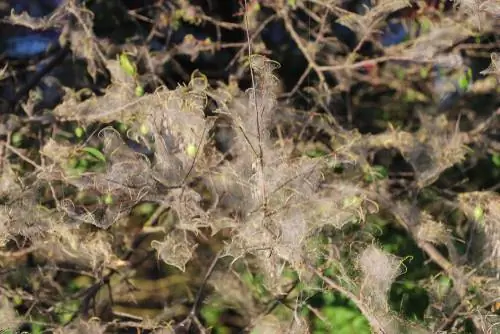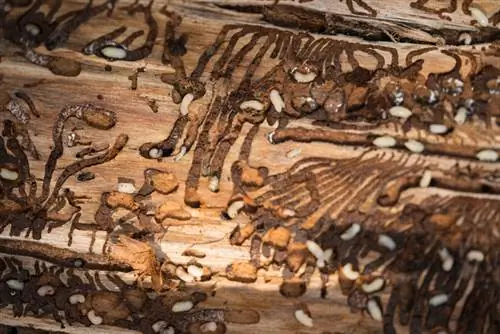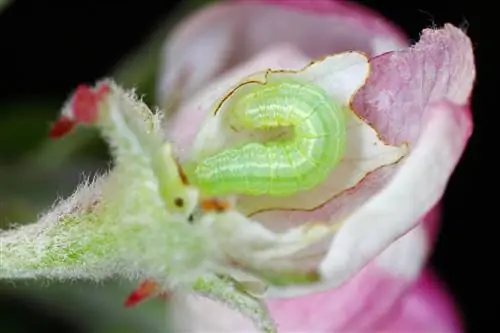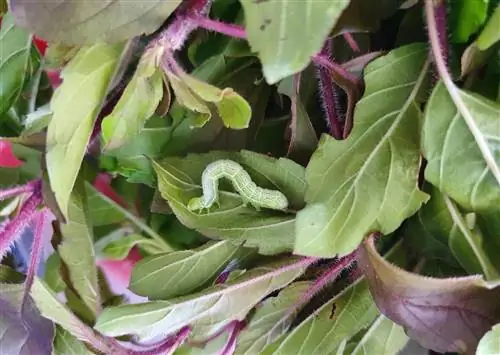- Author admin [email protected].
- Public 2023-12-16 16:46.
- Last modified 2025-01-23 11:22.
It is not uncommon for the Pfaffenhütchen to be covered in fine webs in the spring. The reason for this is the Pfaffenhütchen web moth. The moth has specialized in the wood and uses it every year to lay eggs.
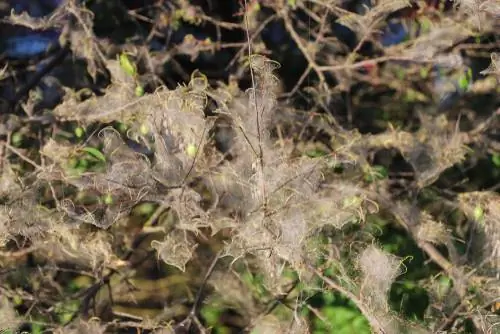
What are Pfaffenhütchen caterpillars and what do they cause?
The Pfaffenhütchen caterpillars are larvae of the Pfaffenhütchen web moth, which appear in fine webs on Pfaffenhütchen bushes in May and June. They feed gregariously and can eat the bush bare, but it often recovers after the second shoot.
Appearance
The caterpillars of the Pfaffenhütchen web moth are light brown in color and have black spots. The yellow-brown head is clearly separated from the body. The butterflies are very small with a wingspan of between 18 and 24 millimeters. Its head and appendages are white in color. The white-gray wings with black dots are typical. Their hind wings are gray to brown in color.
Lifestyle
The moth flies between July and August. They often do not move more than 100 meters from where they hatch. Females send out scents that attract males. After successful fertilization, the females lay eggs in clutches of 50 to 100 on the branches of the Pfaffenhütchen. The egg caterpillars bore into the branches and overwinter there.
In May they eat holes in the terminal leaves, which slowly wither. Between May and June there can be a mass appearance of the caterpillars as they live sociably in webs. The fine spider webs can span the entire bush. The caterpillars stop eating four to five days before pupation. They pupate between June and July in a white cocoon in which numerous cocoons hang. The new generation of moths hatches after ten to 20 days.
Damage
If a Pfaffenhütchen has been completely covered by the webs, it can be eaten completely bare. By the second sprouting, which takes place around June 24th, the caterpillars have stopped eating and pupated. This allows the Pfaffenhütchen to recover well from pest infestation.
Prevention
If your shrub has already been attacked by the spider moth, a new infestation is likely. Before winter, scrape the eggs from the branches. Observe the plant in spring and remove mined leaves. These should be disposed of with residual waste so that the caterpillars do not spread further. Remove webs as early as possible by spraying the entire bush with a strong jet of water.

